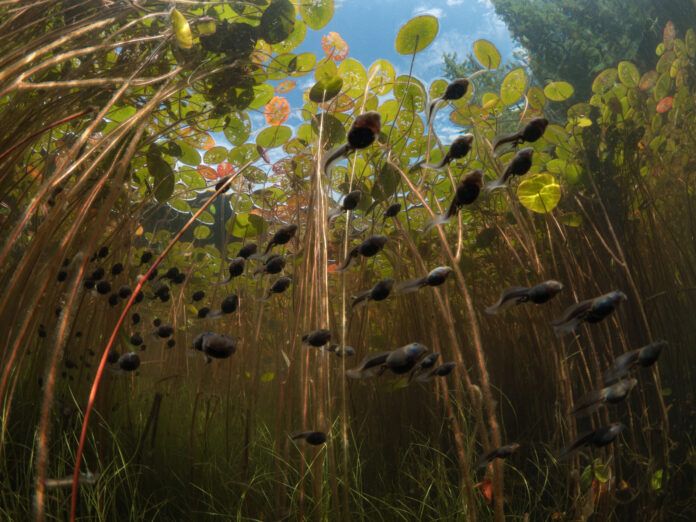The lifecycle of tadpoles filmed by two Island filmmakers is being featured on international streaming sites, narrated by Sir David Attenborough.
Created by Comox Valley based cameramen, Maxwel Hohn and Russell Clark, the film is featured in Netflix’s Our Planet II and comes after a film they released in 2020 that got international film attention.
The original film, called Tadpoles: The Little Big Migration was started by Hohn in 2016 after he caught a glimpse of tadpoles migrating in a nearby lake. He says he felt compelled to document their story.
“I came across this one [lake] that had this amazing amount of lily pads, and I was flying over with my drone,” said Hohn.
“I wanted to get some pictures of the lily pads initially, and then when I was in the water, I noticed this trickle of tadpoles migrating into the shallow water. I became enthralled with the movement and what they were doing, and it was just a unique environment.”
Hohn says he kept coming back to the lake over the next four years, compiling more and more footage and eventually decided to put together a film with Clark.
“We decided that we needed to have a human character to give a little more of a sense of what this ecosystem was like and give it some scale,” said Hohn.
He says they were able to put the film together with very little experience and with minimal gear, and they did not know what to expect. Overnight, the film “blew up” with lots of success.
It ended up winning at a film festival up against other projects with bigger budgets. The film is now used by teachers to educate children about the tadpole lifecycle, and it also grabbed the attention of big wildlife production companies.
One of the companies decided to get Hohn and Clark to refilm the sequence for Our Planet II as a follow up to the original series, which he says was overwhelming but also a dream come true.
“I started by investing a lot of camera gear, high end RED cameras, housings, and we started to talk with a producer to figure out new ways we could film it,” said Hohn.
“We went there for about a month and every day we were in the water seeing what they were doing and watching and observing and figuring out new and interesting behaviour.”
To be able to film the tadpoles and that it could be seen by millions around the world is a surreal feeling for Hohn, especially as there can be a fair amount of pressure.
“You don’t know what wildlife is going to do,” said Hohn. “Wildlife can be very unpredictable so there’s a lot of patience required in this line of work.
“That’s kind of the fun part of it because you don’t really know if you’re going to be able to create the sequence, but you also have the creativity that if that wildlife isn’t doing that particular behaviour, you can try and figure out something else.”
Hohn says the feeling is incredible when things all come together and feels that creating these films helps others become more aware of the little ecosystems working in the background.
“For people to see this tiny little ecosystem that was just in my backyard with tadpoles migrating every day, I just hope they realize these little environments are all throughout the world,” said Hohn.
“It makes me want people to be more aware of the natural world and do everything they can to help preserve and protect it.”
He adds having Sir David Attenborough narrate his story is also a dream come true, and something he will cherish for the rest of his life.
Our Planet II began its airtime on Netflix on June 14. A link to watch the original film can be found here.



